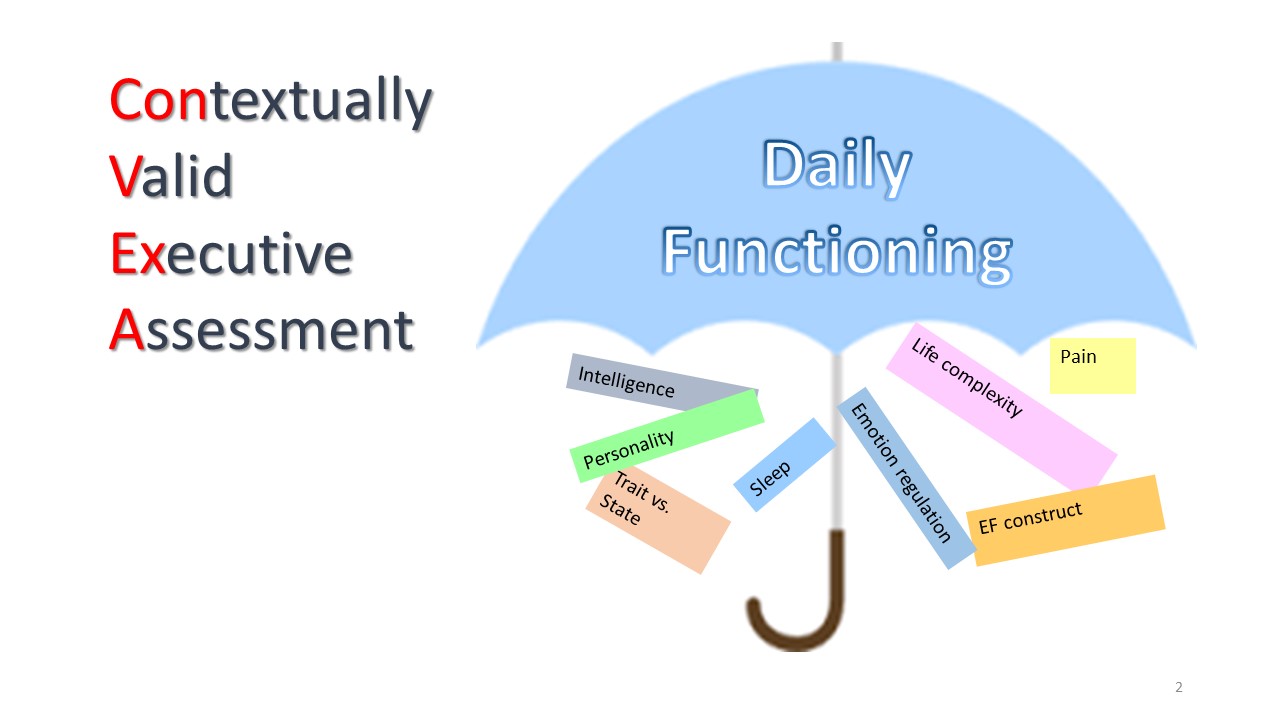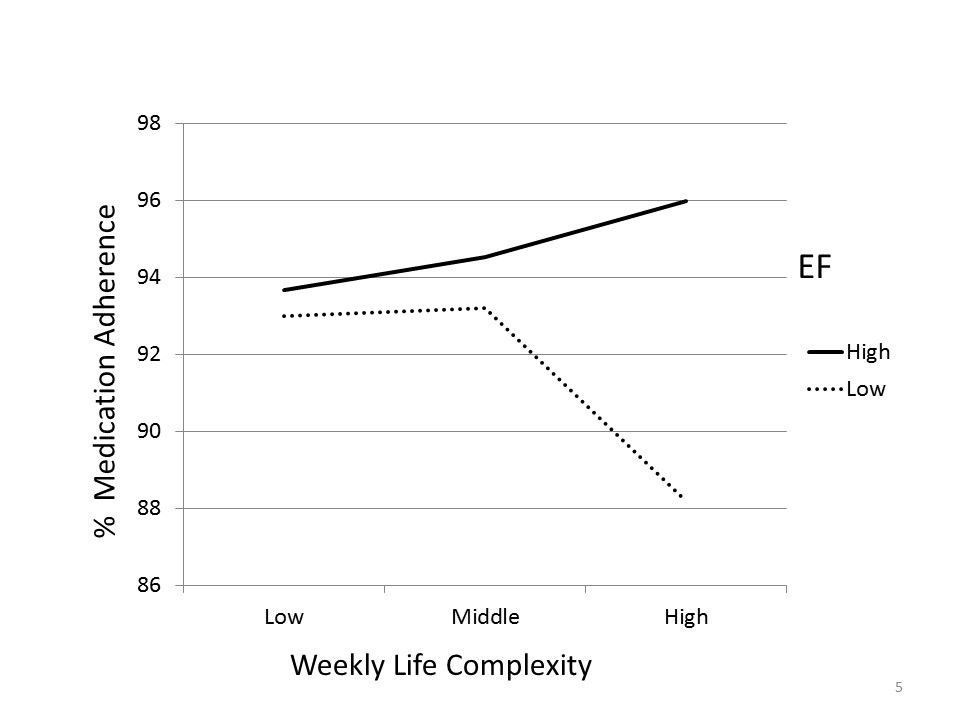
Lab Co-Directors:
Post-doctoral Fellow:
Christine Mullen, Ph.D.
Graduate Students:
Ty McKinney, M.S.
Jasmin Guevara
Julia Vehar
Collaborators:
Future Students:
The ConVExA Lab is currently planning to recruit a new graduate student for Fall 2020
The ConVExA Model:
Contextually Valid Executive Assessment (ConVExA) is a model developed in our laboratory with the goal of improving our ability to use measures of executive functioning for prediction of functional outcomes. The model posits that (a) the association between Executive Functioning (EF) and functional outcomes (e.g., instrumental activities of daily living, functional independence, medication management, driving ability, etc.) is moderated by certain contextual factors (e.g., sleep, pain, stress, life complexity) and/or certain individual-difference factors (e.g., demographics, personality, IQ etc.), whereas (b) the association between certain contextual and individual-difference factors and functional outcomes is mediated by EF.

The moderation aspect of the ConVExA model is demonstrated by recent findings from our laboratory. For example, we are finding that among community-dwelling older adults their medication management is deleteriously affected by daily life complexity, but only for people who exhibit weaknesses in EF.
Specifically, we assessed actual at-home medication management over the course of 8 weeks. We also inquired about the participants' life complexity in a typical week. Life complexity was operationalized as the number of hours spent in vocational, avocational, and recretational activities, and the percent of responsibiliy for a variety of home-making activities, such as cooking, shopping, lawn care, or home maintenance. As seen in the figure to the left, participants who had poorer EF and were in the top tertile of the sample's weekly life complexity only took on average about 88% of their medications correctly, as compared to about 95% in the rest of the sample.

Similarly, we are finding that recent burden of expressive suppression is associated with poorer efficiency in performing instrumental activities of daily living, but, again, only among those individuals with weaker EF.
Specifically, as seen in the Figure to the right, individuals with high levels of expressive suppression burden over the past two weeks who are 1SD or more below the sample mean on EF take longer to complete timed IADL tasks in the laboratory. Expressive suppression burden does not seem to have an impact on those who are within the mean or higher on EF.
The mediation aspect of the model has also been demonstrated in our recent work: We have found that there is an association between acute burden of expressive suppression and lapses in instrumental activities of daily living, but this association is fully mediated by EF. In other words, when individuals experience acute burden of expressive suppression, their EF is deleteriously affected, which, in turn, has a negative impact on their ability to avoid making mistakes when performing activities of daily living.
Current Projects:
DAILIES (Daily Assessment of Independent Living and Executive Skills)
